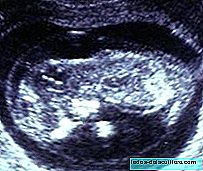
Among the existing ultrasound techniques, there is one that offers a lot of information about some of the possible chromosomal abnormalities of the fetus, it is the nuchal translucency.
This technique is similar to a normal ultrasound, but thanks to it, many aspects of the future baby's health can be discovered. With this ultrasound examination, which is usually performed between weeks 11 and 14 of pregnancy, it can be established very reliably if the future baby may be affected by any chromosomal disease such as trisonomy 21, also known as Down syndrome.
Although this ultrasound technique does not obtain absolute data, it is important for young mothers who have not exceeded 35 years, since they do not perform chorion biopsy or amniocentesis, these tests are performed mainly on mothers who exceed 35 years or with a history. But still, many young moms want to be sure that their baby does not have any chromosomal abnormality, and thanks to nuchal translucency, this type of risk can be foreseen. Unlike amniocentesis or chorion biopsy, which are invasive tests, nuchal translucency is not and there is no risk of miscarriage.
Nuchal translucency is usually performed on young mothers who may have a history of chromosomal abnormality in their family. Thanks to this technique, the space between soft tissues and the skin behind the baby's neck can be measured. In this area a pseudolymphatic fluid is formed that should occupy a space of less than three millimeters. As long as this value is not exceeded, everything is normal, but if it is a higher value, there are more risks that the future baby has some chromosomal abnormality.
The advancement of medicine guarantees greater prevention and solutions so that as far as possible, the outcome of the birth of a baby is always happy.












